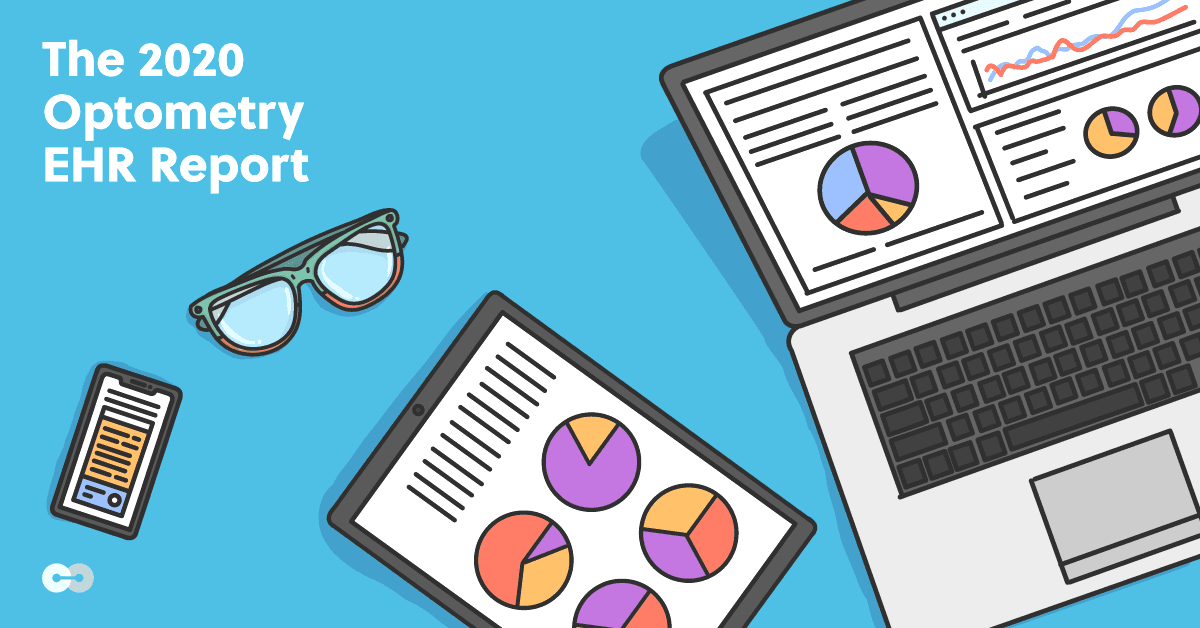Electronic health records are near-ubiquitous in healthcare today, but this relatively young technology is still rich with opportunities and new innovations. EHRs have grown from a basic computerized database to a rich assortment of tools to help you diagnose and manage ocular disease, stay in touch with your patients, and grow your practice. Today, the best optometry EHRs share three core elements: a focus on eyecare, commitment to technology, and customer support.
Earlier this year, we surveyed 619 optometrists and practice owners to learn more about what drives the choice of an EHR, who chooses it, and what you wish your EHR could do for you. In this 40-page report, we cover questions ranging from monthly costs to ease of onboarding, including discussions of the value of cloud-based versus server-based EHRs.
Download the report!

Download the 2020 EHR Report
Get 4 years of never-before-seen data on the most important aspects of optometry EHRs

Cloud-based versus server-based EHRs
There are major benefits to either type, of course. Because server-based EHRs only allow for on-site access, this requires the practice to maintain its own servers, leading to ongoing IT time and costs. Doctors can only work from the office, which in 2020 has become not just an annoyance, but a potential risk.
With a cloud-based EHR, practice owners can offload server management to the software provider, who handles server load and security. Doctors can access the EHR from anywhere, meaning that limited in-office hours don’t limit patient care and potential telehealth offerings.
In our survey, we saw cloud-based EHR popularity rise from 2017’s 60% adoption rate amongst practice owners to 72.7% in 2020. Amongst associate ODs, the difference in the importance of a cloud-based EHR changed even more dramatically: from a plurality of ODs in 2018 and 2019 rating the importance of a cloud-based EHR at a 5/10 to a plurality of ODs rating the importance of a cloud-based EHR in 2020 at an 8/10.
It’s easy to see why cloud-based EHRs have become so important this year of all years: with the leap in the importance of telehealth offerings, and the understandable fear patients, doctors, and staff might feel about coming into the office during a pandemic, being able to offer care at a distance has become more crucial than ever.
Making patient care possible at a distance
We’ve spoken to several eyecare practitioners of all kinds who cited their cloud-based EHRs as one major factor in their ability to build successful reopening plans during the pandemic. By holding patient consultations from home (theirs and the patients’), doctors are able to minimize patient time in the office and the number of people congregated in the practice each day.
Of course, none of this would be possible without training—and that was another factor respondents cited when answering questions about the most important factors they saw in their choice of new EHR. Cost was certainly at the forefront of some minds, but most important to a plurality of ODs was the ease of implementation and user support.
When it comes to the challenges faced by EHR users, it’s also not a surprise that the majority of respondents cited difficulty learning to use the software and entering data—and that potential loss of data when transferring to a new system was the major barrier when it came to switching EHRs.
So what does this all mean for ODs?
As more practices go digital, it’s crucial to make the right choice for your EHR from the start. Switching EHRs after a few years can be a major hassle, between labor costs and the potential loss of patient and practice data. Researching your options and the possibilities out there ahead of time can save you time, money, and patience!
